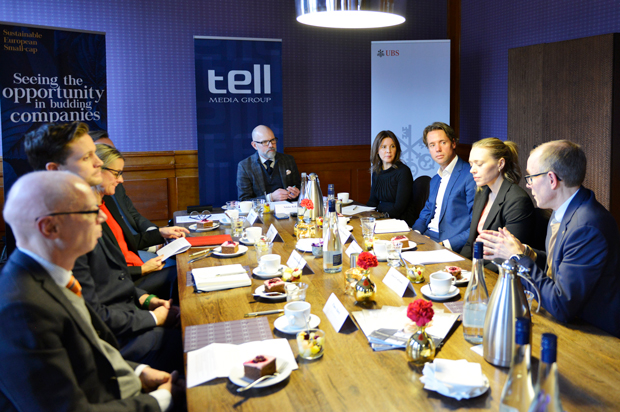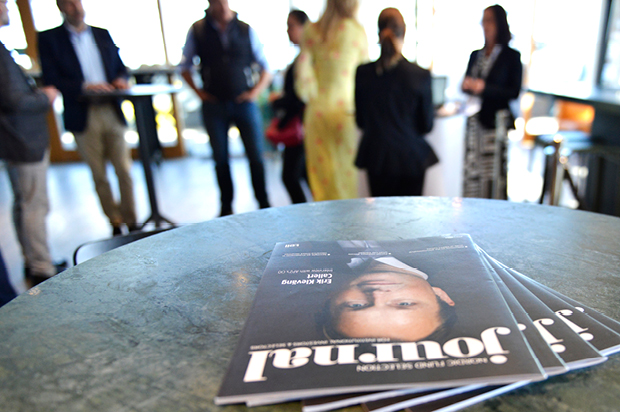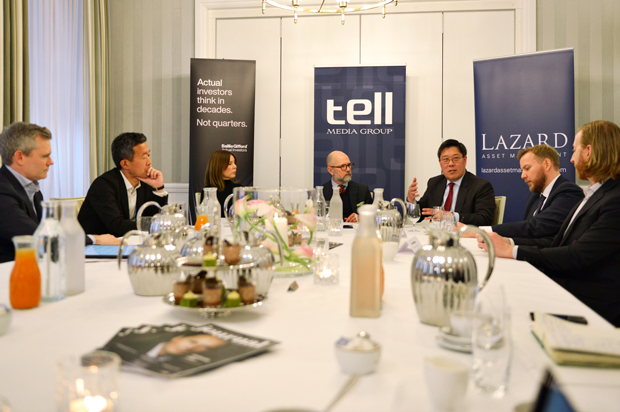
Diverse range of possible outcomes in 2023
At the end of last year, Tell Media Group, in cooperation with DWS, UBS Asset Management and Kempen Capital Management, organised a roundtable discussion in Stockholm with Swedish investors, focusing on asset allocation challenges and the outlook for 2023. Tell Media Group founder Niklas Tell and Nordic Fund Selection Journal editor Caroline Liinanki moderated the discussion.
The discussion started out with Caroline Liinanki asking the investors about their expectations going into 2022 and what the biggest surprises were during the year.
MARIE GIERTZ: “We came, of course, from a strong year in 2021, which was very good for the stockmarket. The question at the time was what the trigger would be for the markets. Companies were in good shape and consumers, especially in the US, had saved during the pandemic and were ready to spend. But at the same time, we did see inflation coming and I think everyone was prepared for monetary tightening. We expected volatility but I wouldn’t say we were fully prepared for what we’ve seen in 2022 with the war in Ukraine, a spike in inflation and interest rates as well as an energy crisis.”
CLAES AHREL: “Going into this year, we believed everything looked very expensive – both bonds and equities. We started to reduce equities, credits and the duration last year and I was actually looking forward to 2022. But then Ukraine happened and that made me regret that we didn’t do more at the end of 2021. We thought we were defensive but obviously not enough considering what happened.”
MAGDALENA HÖGBERG: “I agree with much of what has already been said. We’ve had the belief for some time that interest rates would approach more normalised levels and that inflation might rise but not at the speed we observed last year. We’ve therefore been trying to prepare the portfolio for a higher interest rate environment by increasing real assets and we introduced a position in defensive equities in early 2022. What we didn’t see coming at the onset of 2022 was, of course, the war in Ukraine and we also weren’t fully prepared for the intensity of the inflation chock. It has been an interesting year that many people have described as one to tell the grandchildren about.”
JAKOB CARLSSON: ”Each year, we go through what the risk and financial position would look like in different stressed scenarios. Of course, we couldn’t foresee what would happen in 2022 but the board did see significantly increased risks, so we took some positions on the currency side and we also reduced the duration in our fixed income portfolio. Then we actually had workshops and discussions in January and February about the increased possibility of a war in Ukraine but we still weren’t fully prepared for all that has happened this year with a full-scale war in Europe.”
NIKLAS TELL: BJÖRN, DO YOU HEAR SIMILAR VIEWS FROM CLIENTS ACROSS EUROPE?
BJÖRN JESCH: “Similar in terms of ‘we have been wrong’ – absolutely. Both when it comes to the war in Ukraine and when it comes to the velocity of the rate hikes. Now, we take the war as an excuse and explanation for the inflation we’re seeing and I think that’s wrong. However, the inflation is driven by the supply side and not by the demand side. That’s especially true in Europe. On a positive note, I was surprised to see how resilient companies were and how quickly countries were able to steer away from Russia. Remember that Germany used to import roughly half of the gas from Russia. Also, companies have reduced gas consumption by 15 to 25 per cent and still produce roughly the same output.”
CONOR HAMILTON: “We were fairly positive going into 2022 and expected above trend growth around the world. We thought, however, that central banks would need to hike more than markets expected. We also expected inflation to peak around March and the resilience of inflation has been what surprised us the most in 2022. Also, the reopening in China is somewhat surprising given the fact that we’re going into winter and I think that’s something to look out for in 2023.”
MICHIEL MEEUWISSEN: “I’m fairly happy with what we did at the beginning of 2022 as we had similar expectations as what has already been mentioned. We were concerned about valuations for both equities and fixed income, so we reduced duration risk and equity risk. We also invested more in more flexible macro and systematic managers. With traditional managers, you can only take duration to zero but with alternative managers, you can take the other side and that helped us. I think one of the bigger surprises this year has been the more recent rally in equities on the back of slightly lower inflation numbers.”
The roundtable discussion was published issue 01, 2023 of Nordic Fund Selection Journal. A PDF of the complete story can be found here.
//Participants
- MARIE GIERTZ, Chief investment officer, Kåpan
- MAGDALENA HÖGBERG, Head of strategic allocation and quantitative analysis, AP4
- JAKOB CARLSSON, CEO, Länsförsäkringar Liv
- CLAES AHREL, Managing director, Telia Pension Fund
- BJÖRN JESCH, Global chief investment officer, DWS
- CONOR HAMILTON, Investment specialist, investment solutions, UBS Asset Management
- MICHIEL MEEUWISSEN, Head of manager research solutions & portfolio manager, Kempen Capital Management



